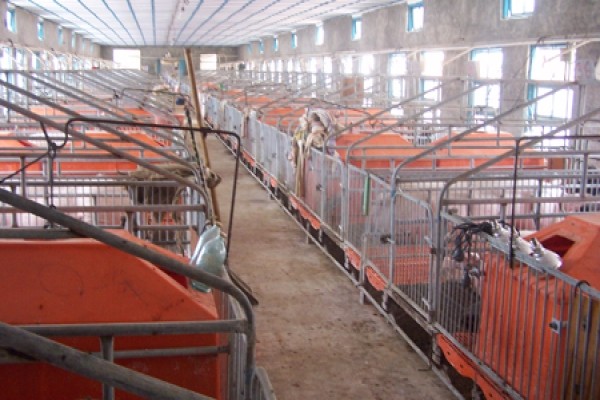Methods for handling odors
So far, the traditional treatment techniques for industrial wastewater with medium and low concentrations of ammonia nitrogen mainly include blow off method, chemical precipitation method, breakpoint chlorination method, biological denitrification method, ion exchange method, catalytic oxidation method, etc. There are also other unconventional treatment methods, such as membrane separation method, electrochemical oxidation method, electrodialysis method, ultrasonic method, microwave method, soil irrigation method, algae breeding method, etc.
At room temperature, the stripping method is primarily used for the treatment of medium and low concentration ammonia nitrogen wastewater. Because this method is easy to operate, has a simple device structure, and is easy to manage.
Ozone technology is commonly used for drinking water disinfection and sewage purification, as ozone preparation skills are becoming increasingly sophisticated. Compared to traditional chlorine gas disinfection skills, it has the advantages of no secondary pollution, good purification effect, and outstanding disinfection and decolorization effects. Selecting ozone to treat ammonia nitrogen in brine and conducting experiments on the effect of halogen ions on ammonia nitrogen removal. The results indicate that, I - and Cl - have no effect on the removal of ammonia nitrogen, and NO3- is generated during the oxidation of ammonia nitrogen; And Br - participates in the conversion reaction of ammonia nitrogen, has a positive impact on the removal of ammonia nitrogen, and only a small amount of NO3- occurs. In addition, the ozone biological activated carbon process (O3-BAC) was selected for advanced treatment of the effluent from the secondary sedimentation tank of the sewage treatment plant, and the treatment effects of this process on CODCr, ammonia nitrogen, and chromaticity were analyzed. The results showed that the treated effluent had a CODCr of 26.7mg/L, ammonia nitrogen of 0.18mg/L, and a chromaticity of about 5 times, demonstrating outstanding performance.

Plant liquid deodorant can be sprayed with general spray bottles or spray equipment. The deodorant can be atomized into the space to form small aerosol particles with large specific surface area, which can absorb odor molecules in the air. The adsorbed odor molecules can react with the effective components in the plant extract to generate odorless substances.
The selection of iron coated sludge for the treatment of medium and low concentration ammonia nitrogen wastewater showed that the amount of iron coated sludge modified with 0.15mol/L ferric chloride solution at room temperature was 5g/L, At a pH of 9, the ammonia nitrogen removal rate can reach over 95% after 40 minutes of reaction, and this adsorption reaction fits the pseudo second order rate equation. Use this process condition to treat ammonia nitrogen concentration of 102.68mg/L The actual industrial wastewater with a COD of 362mg/L has an ammonia nitrogen concentration of 9.2mg/L in the treated filtrate The COD is 83mg/L, which meets the first level standards of the "Integrated Wastewater Discharge Standards" (GB8978-1996) (NH4 concentration< 15mg/L and COD< 100mg/L).
The stripping method is primarily used for the treatment of high concentration ammonia nitrogen wastewater. In the process of removing ammonia nitrogen, although the stripping method has higher energy consumption and cost than the stripping method, its removal power is higher than the stripping method. The stripping method has the advantages of good removal effect, simple process flow, and easy operation. Moreover, the ammonia nitrogen after stripping can be recovered in the form of ammonia water or ammonium sulfate, which can achieve the goal of resource recovery and utilization.
The article originates from a deodorant manufacturer http://www.scneng.com.hk
-
06-11
"Environmental Doctor" Du Siyuan: Environmental Protection is a Lifestyle Attitude
There is a Hong Kong compatriot in Jiangmen who often frequents various farms and plantations, walks in mechanical factories, and is seen by others as the nemesis of environmental problems. He conside
-
03-16
Deodorant manufacturer: Deodorants reduce soil pollution
Waste is a chaotic mixture of various components. The accumulation of debris on the surface of soil can cause some chemical reactions, releasing harmful gases, which can lead to soil pollution and eve
-
12-01
Deodorant Manufacturers: Differences between Microbial Deodorants and Traditional Deodorants
The waste that is not needed in our daily life and work is called waste. Due to the large amount of waste discharged and the complex categories, there are great difficulties in reducing waste and deod
-
11-08
Application of Deodorant Manufacturers in Domestic Waste Treatment
Garbage is the waste generated in everyone's daily life and work. Due to its large discharge volume and complex and diverse composition, it poses great difficulties in reducing and deodorizing wa
